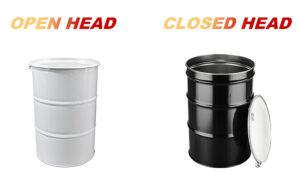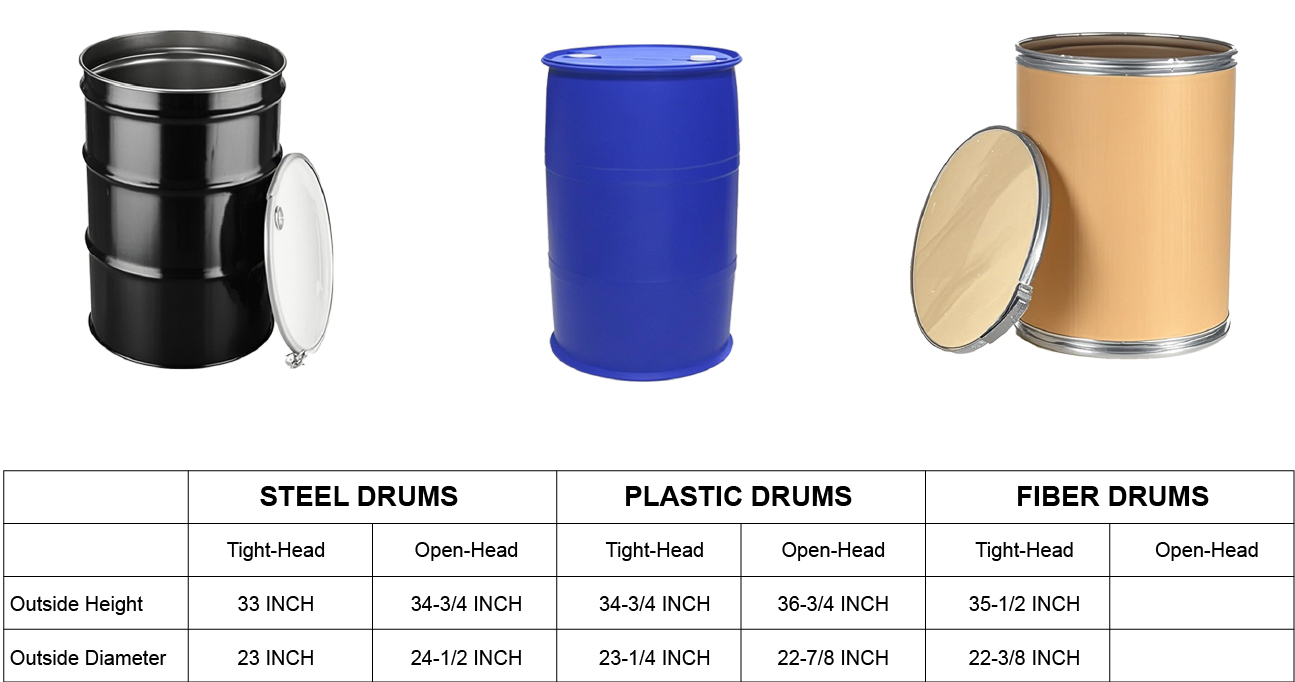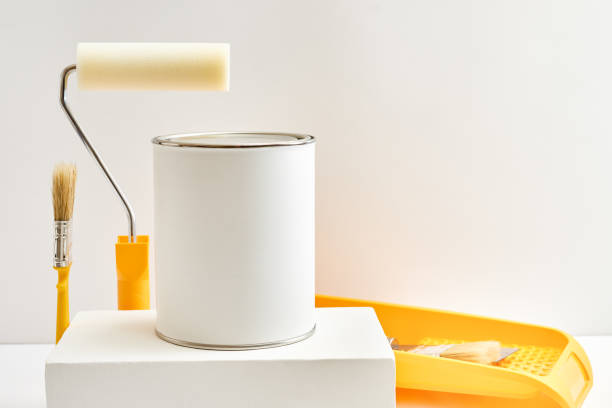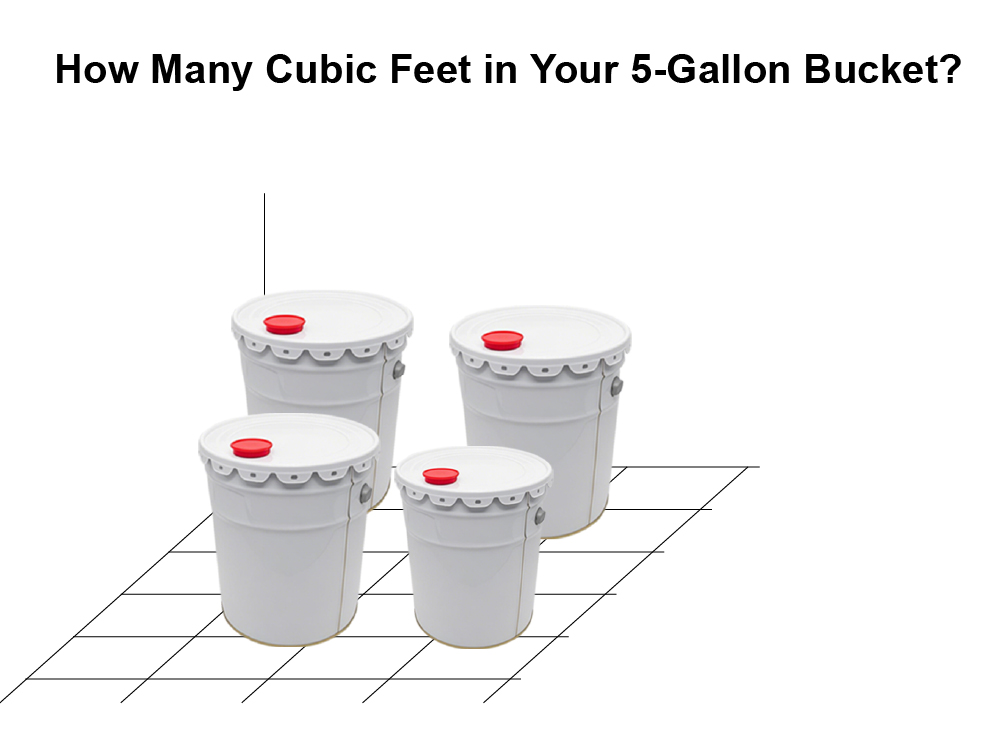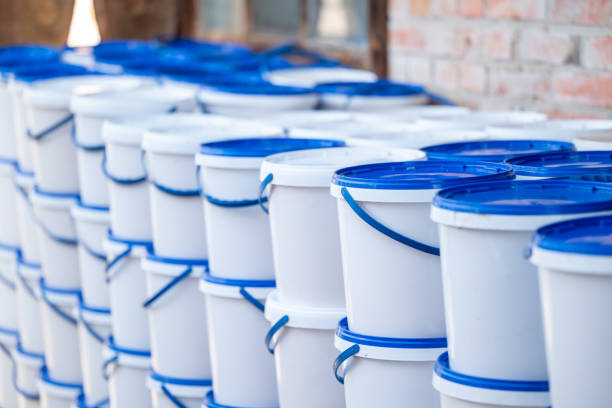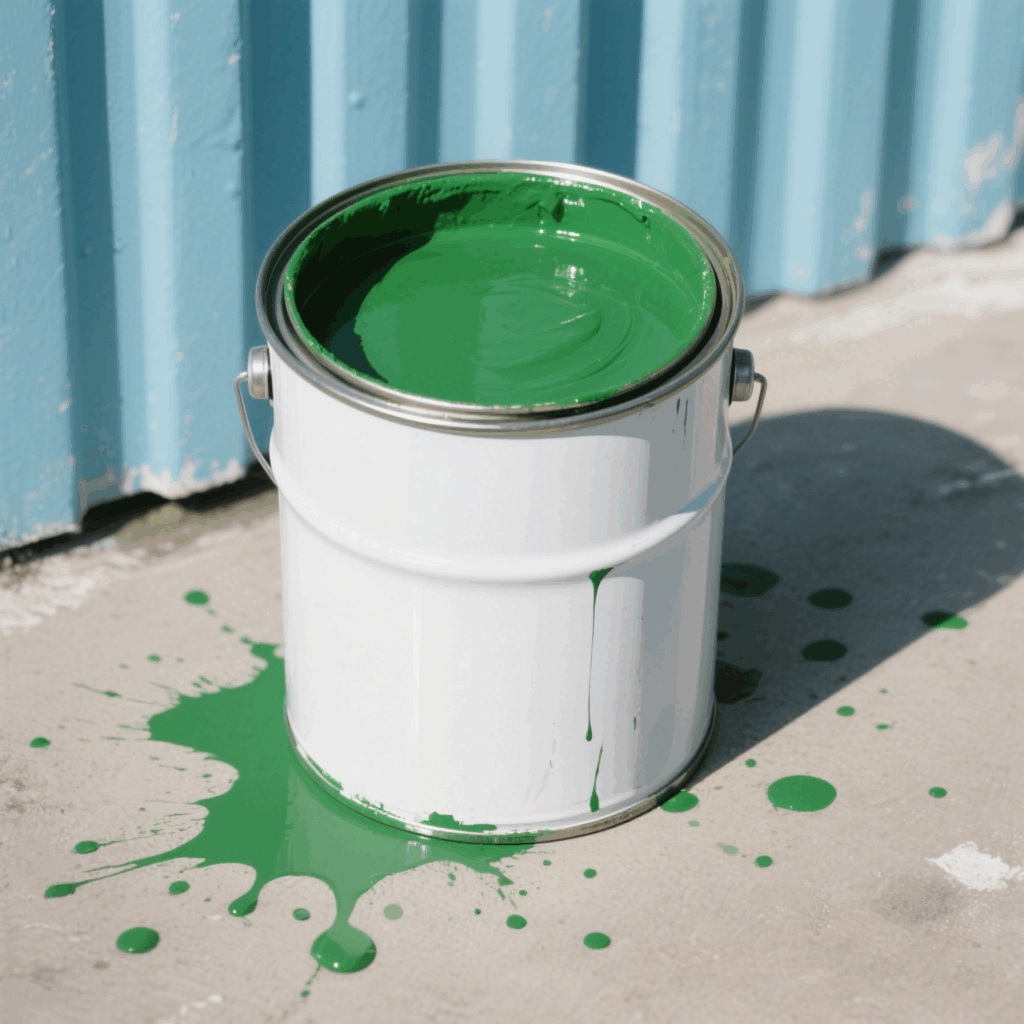What Are the Exact Dimensions of a 55-Gallon Drum?
Genel olarak, a 55-gallon drum will exhibit an exterior height ranging from approximately 33 inç 36-3/4 inches and an exterior diameter typically falling between 22-3/8 inches and 24-1/2 inç. These figures represent a common envelope, but it is critical to recognize that they are not absolute.The actual measurements can deviate based on several influencing factors.
Historical Roots of the 55-Gallon Drum
In the mid-19th century, wooden barrels were the primary containers for shipping goods like oil, with early efforts in the 1860s to establish a 42-gallon standard for petroleum. Fakat, a more definitive shift towards the modern 55-gallon drum occurred in the early 20th century. A pivotal moment came in 1905 when John D. Rockefeller’s Standard Oil company began placing orders for mass-produced, cold-rolled carbon cylindrical steel containers designed to hold 55 gallons of oil. These early steel drums incorporated features like reinforcing ribs (chimes or hoops) for added rigidity and strength, facilitating handling and transport. This initiative by a major industrial player effectively set the precedent for the 55-gallon steel drum, which rapidly became an industry benchmark.
Types of 55-Gallon Drums
The choice of material for a 55-gallon drum is a critical decision, profoundly influencing its performance, dayanıklılık, compatibility with contents, and cost. The three primary materials employed are steel, plastik (polyethylene), and fiber.
A. Steel Drums: Steel drums are a long-standing benchmark in industrial packaging, valued for their strength and robustness.These are the most prevalent type for storing and transporting a vast array of bulk materials. They are typically fabricated from sheets of cold-rolled, low-carbon steel.
Plastic (Polyethylene) Drums: Plastic drums, typically manufactured from high-density polyethylene (HDPE), offer excellent chemical resistance and durability. These drums are commonly produced via blow molding, a process that creates a seamless, monolithic structure. Many plastic drums, particularly blue ones, are manufactured using FDA- and USDA-compliant polyethylene resins, making them suitable for storing liquid food-grade ingredients and potable water.
Fiber Drums (Cardboard/Fiberboard): Fiber drums offer a lightweight and often more sustainable packaging option for specific types of goods. These drums are constructed from cylinders formed by rolling multiple layers of kraft paper (fiberboard) together with adhesives. Fiber drums almost exclusively feature a full open-top design. Their construction makes them ideal for storing and transporting dry granular products, powders, solid items, and some semi-solids.
Understanding Open-Head vs. Closed-Head Designs
Beyond material and overall dimensions, the type of head or top closure is a fundamental design characteristic that dictates how a drum is filled, emptied, and what types of materials it is best suited to contain. There are two primary configurations: open-head and closed-head (also known as tight-head).
A. Open-Head Drums
- Tanım: An open-head drum is characterized by a fully removable top or lid. This lid is typically secured to the drum body using a locking ring mechanism, which can be a bolt ring (requiring a tool to tighten/loosen a bolt) or a lever-lock ring (allowing for quicker manual closure and opening). This design provides complete and unobstructed access to the drum’s interior.
- Uygulamalar: The easy access afforded by the removable lid makes open-head drums ideal for storing and transporting a variety of materials that would be difficult to handle through small openings. These include semi-solid substances (Örn., greases, pastes), highly viscous or thick liquids (Örn., yapıştırıcılar, heavy paints, syrups), powders, granular materials, and solid objects. They are also preferred when manual scooping, stirring, or mixing of contents within the drum is necessary.
B. Closed-Head (Tight-Head) Drums
- Tanım: In a closed-head drum, also referred to as a tight-head or sometimes by the UN designation component “1A1” for steel drums, the top is permanently attached to the drum body, forming an integral part of the container. Access to the interior for filling and dispensing is provided by one or more smaller, threaded openings, commonly called bungholes or bungs. A typical configuration includes a 2-inch (NPT – National Pipe Thread) bung for filling and emptying, and a smaller 3/4-inch or 1/2-inch (NPT) bung that serves as a vent to facilitate liquid flow and prevent vacuum formation. These openings are sealed with threaded plugs.
- Uygulamalar: Closed-head drums are the preferred choice for low-viscosity liquids. The sealed design minimizes the risk of spillage, evaporation, and contamination, making them suitable for volatile chemicals, solvents, yağlar, içecekler, and other free-flowing liquids. Dispensing is typically achieved by pumping or pouring through the bung openings.
What are 55 Gal steel drum dimensions?
A typical closed-head steel drum measures approximately 33 inches in height and 23 inches in diameter, and has a radius of about 11.25 inç, while an open-head version is around 34-3/4 inches high and 24-1/2 inches in diameter, and has a radius of about 11.25 inç.
What are the dimensions of a 55-gallon plastic drum?
A closed-head plastic drum is often around 34-3/4 inches high with a 23-1/4 inch diameter, and has a radius of about 11.5 inç, while an open-head plastic drum might be 36-3/4 inches high with a 22-7/8 inch diameter, and has a radius of about 11.1 inç.
What are the dimensions of a 55-gallon fiber barrel?
A common open-head fiber drum with a fiber cover and lever lock ring closure measures approximately 35-1/2 inches in height and 22-3/8 inches in diameter, and has a radius of about 11 inç.
What is the weight of a 55 gallon bucket?
The average a 55-gallon steel drum weighs 48 pounds (22kg) when empty, a 55-gallon plastic barrel weighs 21.5 lbs. (9.8 kg) when empty, and a 55-gallon fiber barrel weighs 16 lbs. (7.25 kg) when empty.
Water, a common reference, has a density such that 55 gallons weigh approximately 459 pounds (roughly 208 kilograms). When the tare weight of the drum itself (which varies by material – steel being the heaviest, fiber the lightest) and the density of the actual product are factored in, a full 55-gallon barrel weighs an average of 500 pounds (about 227 kilograms), If the product is less dense than water, it will be much lighter.For example, a 55-gallon steel drum filled with oil weighs about 444 pounds (201 kg).
How Do You Move a 55-Gallon Drum?
1. Use a Drum Dolly
-
Best for: Flat surfaces and short distances.
-
Nasıl: Place the drum upright on the dolly. Secure it if needed.
2. Use a Drum Truck or Drum Handler (Drum Trolley)
-
Best for: Medium distances or uneven surfaces.
-
Nasıl: Slide the truck under the drum’s edge, tilt back, and roll.
3. Forklift with Drum Attachment
-
Best for: Industrial settings, long distances, or heavy drums.
-
Nasıl: Attach a drum grabber or drum clamp to the forklift.
4. Manual Rolling (Only for Empty or Light Drums)
-
Nasıl: Stand the drum on its rim and roll it along the edge like a wheel.
-
Warnings: Not safe for full or hazardous contents. Risk of tipping or injury.
5. Pallet Jack with Drum on a Pallet
-
Best for: Standard warehouse operations.
-
Nasıl: Place the drum on a secure pallet, then lift with a pallet jack.
Sık sorulan sorular (SSS) About 55-Gallon Drums
Q1: How much does a full 55-gallon drum weigh?
This depends entirely on the density of the substance stored in it. Water weighs approximately 8.34 pounds per gallon. So, a 55-gallon drum filled with water would contain about 55 galon * 8.34 lbs/gallon = 458.7 lbs of water. Add the weight of the empty drum itself (Örn., ~45 lbs for a steel drum or ~22 lbs for a plastic drum), and a full drum of water could weigh over 500 lbs (227 kg). Oils and other chemicals will have different densities, Each gallon of oil weighs 7.2 pounds, so a full 55-gallon drum of oil weighs about 444 pounds.. Always check the Safety Data Sheet (SDS) for the specific gravity of the material to calculate the weight accurately.
Q2: Are 55-gallon drums UN rated? What does that mean?
Many, but not all, 55-gallon drums are UN (United Nations) rated. A UN rating indicates that the drum has passed specific performance tests designed to ensure it can safely transport hazardous materials. The UN marking on a drum (Örn., “UN 1A1/Y1.8/200”) provides information about the drum type, material, packing group it’s suitable for, maximum specific gravity of the liquid, and test pressure.
- 1A1: Indicates a steel, tight head drum.
- 1H1: Indicates a plastic, tight head drum.
- Y: Indicates suitability for Packing Groups II and III (medium and minor danger). “X” would be for Packing Group I (high danger).
- 1.8: Maximum specific gravity of the liquid the drum is rated for.
- 200: Hydrostatic test pressure in kPa.
If you are shipping hazardous materials, you must use UN-rated packaging that is appropriate for the specific material and mode of transport.
Q3: Can I reuse a 55-gallon drum?
Evet, 55-gallon drums can often be reused, but with important caveats:
- Know the Previous Contents: This is the most critical factor. If a drum previously held hazardous materials, it must be professionally reconditioned (cleaned and tested) according to strict regulations before it can be reused, especially for a different type of material or for non-hazardous purposes. Never reuse a drum that held hazardous materials if you are unsure of its history or how to clean it properly.
- Material Compatibility: Ensure the drum material is compatible with the new substance you intend to store.
- Condition of the Drum: Inspect the drum for rust, çirkin, punctures, or weakened seals. Damaged drums should not be reused.
- Temizlik: Thorough cleaning is essential. The cleaning method will depend on the previous contents.
- Regulations: For commercial reuse, especially for hazardous materials, reconditioning and recertification processes may be legally required.
Q4: How do I clean a 55-gallon drum?
Cleaning methods vary widely depending on the previous contents and the intended future use.
- Water-Soluble Residues: Rinsing with water and detergent may suffice. Multiple rinses are often necessary.
- Oils and Greases: Steam cleaning or using degreasers might be effective.
- Chemical Residues: This is more complex and may require specific neutralizing agents or solvents. This should often be left to professional reconditioners due to safety and disposal concerns of the cleaning agents themselves.
- Disposal of Rinse Water: Be mindful that the rinse water (rinsate) may be considered hazardous waste depending on the drum’s previous contents and must be disposed of according to local regulations.
Q5: What are bungs and how do I open them?
Bungs are the threaded plugs found in the openings of tight head drums. They typically come in 2-inch and ¾-inch sizes.
- Opening Bungs: A specialized tool called a bung wrench or drum wrench is designed to safely open and close bungs. Using improper tools like screwdrivers or pliers can damage the bung or the drum, and can even be dangerous if the drum contains flammable or pressurized materials.
- Venting: When opening a drum, especially one that has been stored in varying temperatures or contains volatile materials, it’s crucial to vent it slowly by slightly loosening the smaller (¾-inch) bung first to release any built-up pressure before fully opening the larger (2-inch) bung.
Q6: Are plastic 55-gallon drums safe for drinking water storage?
Evet, but ONLY if they are:
- Food-Grade: Made from virgin, FDA-compliant, food-grade high-density polyethylene (HDPE). Look for markings like “NSF approved” veya “FDA compliant.”
- Blue Color: Blue plastic drums are commonly used for water storage as the color helps inhibit algae growth by blocking UV light. Fakat, color alone does not guarantee food-grade status.
Q7: How do I dispose of an old 55-gallon drum?
Disposal methods depend on the drum’s material and its previous contents.
- Empty and Clean Drums (Non-Hazardous Previous Contents):
- Steel Drums: Can often be recycled as scrap metal. Contact local scrap metal recyclers.
- Plastic Drums: Check with local recycling facilities. Some may accept HDPE drums, but often they need to be cut or shredded.
- Fiber Drums: May be recyclable with other cardboard or paper products if clean and dry. The metal or plastic components may need to be separated.
- Drums That Held Hazardous Materials: These are considered hazardous waste themselves, even when “empty” (as they may still contain residue).
- They must be disposed of according to EPA and local hazardous waste regulations. This usually involves hiring a licensed hazardous waste disposal company.
- Do NOT simply throw them in a dumpster or take them to a standard landfill. Significant fines and environmental damage can result.
- Reconditioning Services: Many companies specialize in reconditioning drums, which is a sustainable option that prepares them for reuse.
Q8: How should I store 55-gallon drums?
Proper storage is crucial for safety and longevity:
- Level Surface: Store drums upright on a flat, level surface.
- Secondary Containment: For liquids, especially hazardous ones, use secondary containment pallets or spill containment berms to capture any potential leaks or spills. Regulations often mandate this.
- Ventilation: Ensure good ventilation, especially for drums containing volatile substances.
- Protection from Elements: Protect drums from extreme temperatures, direct sunlight (especially plastic drums, which can degrade with UV exposure over time), and moisture (which can cause rust on steel drums).
- Accessibility: Allow for safe access for inspection and handling (Örn., by forklift).
- Labeling: Ensure all drums are clearly labeled with their contents, hazards, and any other required information.
Q9: What Can You Store In A 55-Gallon Drum?
A 55-gallon drum is a highly versatile storage container that can hold a wide range of materials depending on its construction—steel, plastik, or fiber—and whether it’s open-head or closed-head. Liquids: Ideal for storing water , yağlar , kimyasallar , and fuels like gasoline or diesel (steel drums are typically used for flammables). Yiyecek & Beverage: Food-grade plastic drums can safely store grains , sugar or flour , syrups , or be used for fermentation processes like brewing beer or wine . Dry Goods: Common for animal feed , charcoal or wood pellets , clothing , or industrial parts and tools . Waste & Hazardous Materials: Used for collecting used oil , antifreeze, contaminated soil , or even hazardous chemicals (must comply with DOT regulations). Special Uses: Can be repurposed into rainwater harvesting systems , compost bins , BBQ smokers , floating docks , or filled with water/sand for ballast . Always ensure material compatibility and follow regulations, especially for flammable or toxic contents.
Çözüm
Navigating the world of 55-gallon drums can seem complex, but with the right information, you can confidently select, use, and manage these essential containers. From understanding their precise dimensions and material properties to adhering to critical safety and environmental regulations, every detail matters.
If you are looking for high-quality drums tailored to your specific requirements, FANXUN is a world-class drum manufacturer and supplier. They offer a wide range of products in different specifications and shapes, ensuring you can find the perfect solution for your storage and transportation needs. With a commitment to quality and innovation, FANXUN can provide reliable and compliant drum options for various industries.
















